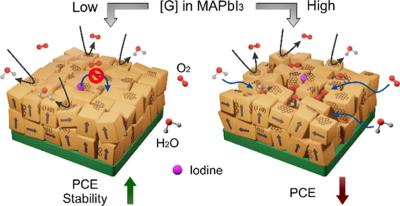Researchers design a 20.9%-efficient perovskite solar device that retains 99% of initial efficiency after 1,450 hours
Researchers from Germany's Forschungszentrum Jülich have developed a planar perovskite solar cell that reportedly reached over 1,400'hours of operational stability at elevated temperatures. The 20.9% efficient device was built without the ionic dopants or metal oxide nanoparticles that are commonly used to contact the cell, as these can be subject to secondary reactions at higher temperatures.
The scientists tested many different perovskite mixtures before choosing the perovskite material for the cell, giving great focus to their thermal stability, using a self-constructed, high-throughput screening platform.







